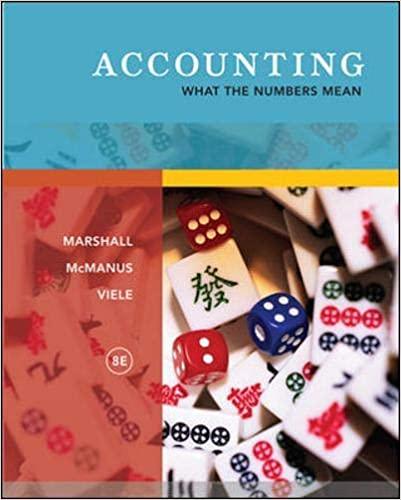Sorry it's a lot of work!
Required information (The following information applies to the questions displayed below.) Laker Company reported the following January purchases and sales data for its only product. Date Activities Units Aequired at Cost Units sold at Retail Jan. 1 Beginning inventory 145 unitse $7.00 - $1,015 Jan. 10 Sales 105 units $16.00 Jan. 20 Purchase 70 units $6.00 420 Jan. 25 Sales 85 units @ $16.00 Jan. 30 Purchase 190 unitse $5.50 - 1,045 Totals 405 units $2,480 190 units The Company uses a perpetual inventory system. For specific Identification, ending inventory consists of 215 units, where 190 are from the January 30 purchase, 5 are from the January 20 purchase, and 20 from beginning inventory Required: 1. Complete the table to determine the cost assigned to ending inventory and cost of goods sold using specific identification 2. Determine the cost assigned to ending inventory and to cost of goods sold Using weighted average. 3. Determine the cost assigned to ending inventory and to cost of goods sold using FIFO. 4. Determine the cost assigned to ending inventory and to cost of goods sold using LIFO. Required 1 Required 2 Required 3 Required 4 Complete the table to determine the cost assigned to ending inventory and cost of goods sold using specific identification. (Round cost per unit to 2 decimal places.) Specific Identification Available for Sale Cost of Goods Sold Purchase Date Activity Units Unit Cost Units Sold Ending Inventory Ending Ending Inventory Cost Per Unit Inventory Cost Unit Cost COOS Unita 145 Jan 1 Jan, 20 Jan 30 Beginning inventory Purchase Purchase 70 190 405 0 Required 1 Required 2 Required 3 Required 4 Determine the cost assigned to ending inventory and to cost of goods sold using weighted average. (Round cost per unit to 2 decimal places.) Weighted Average - Perpetual: Goods Purchased Cost of Goods Sold Inventory Balance Cost per Cost per Date # of units sold #of units Cost per Cost of Goods unit Sold Inventory Balance unit of units unit 145 $ 7.00 $ 1.015.00 January 1 January 10 January 20 Average cost January 25 January 30 Totals Required 1 Required 2 Required 3 Required 4 Determine the cost assigned to ending inventory and to cost of goods sold using FIFO. (Round cost per unit to 2 decimal places.) Perpetual FIFO: Goods Purchased Cost of Goods Sold #of units Cost per Date # of units sold Cost per Inventory Balance Cost per Inventory # of units unit Balance unit Cost of Goods Sold unit January 1 145 @ $ 7.00 $ 1,015.00 January 10 January 20 January 25 January 30 Totals Required 1 Required 2 Required 3 Required 4 Determine the cost assigned to ending inventory and to cost of goods sold using LIFO. (Round cost per unit to 2 decimal places.) Perpetual LIFO: Goods Purchased #of Cost per units unit Cost of Goods Sold # of units Cost of Goods sold unit Sold Cost per Inventory Balance #of units Inventory unit Balance Cost per Date 145 @ $ 7.00 - $ 1,015.00 January 1 January 10 January 20 + January 25 January 30 Totals Required: 1. Complete comparative income statements for the month of January for Laker Company for the four inventory methods. Assume expenses are $1,300 and that the applicable income tax rate is 40%. (Round your Intermediate calculations to 2 decimal places.) LAKER COMPANY Income Statements For Month Ended January 31 Specific Weighted Identification Average FIFO LIFO 0 0 0 0 Sales Cost of goods sold Gross profit Expenses Income before taxes Income tax expense Net income 0 0 0 0 $ 0 $ 0 0 $ 0 $ 2. Which method yields the highest net income? OLIFO Specific identification O FIFO Weighted average 3. Does net income using weighted average fall between that using FIFO and LIFO? O Yes 4. If costs were rising instead of falling, which method would yield the highest net income? Specific identification O FIFO Weighted average OLIFO













